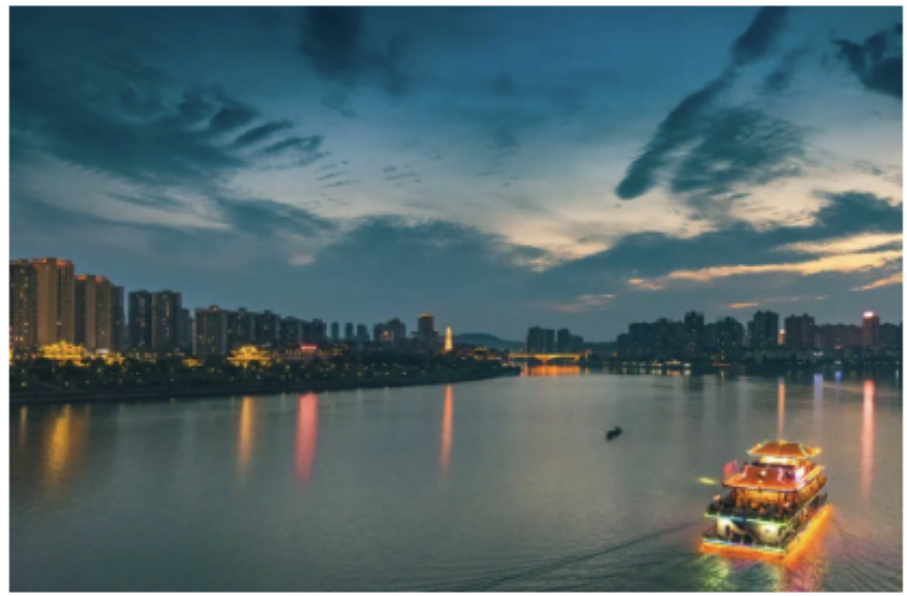


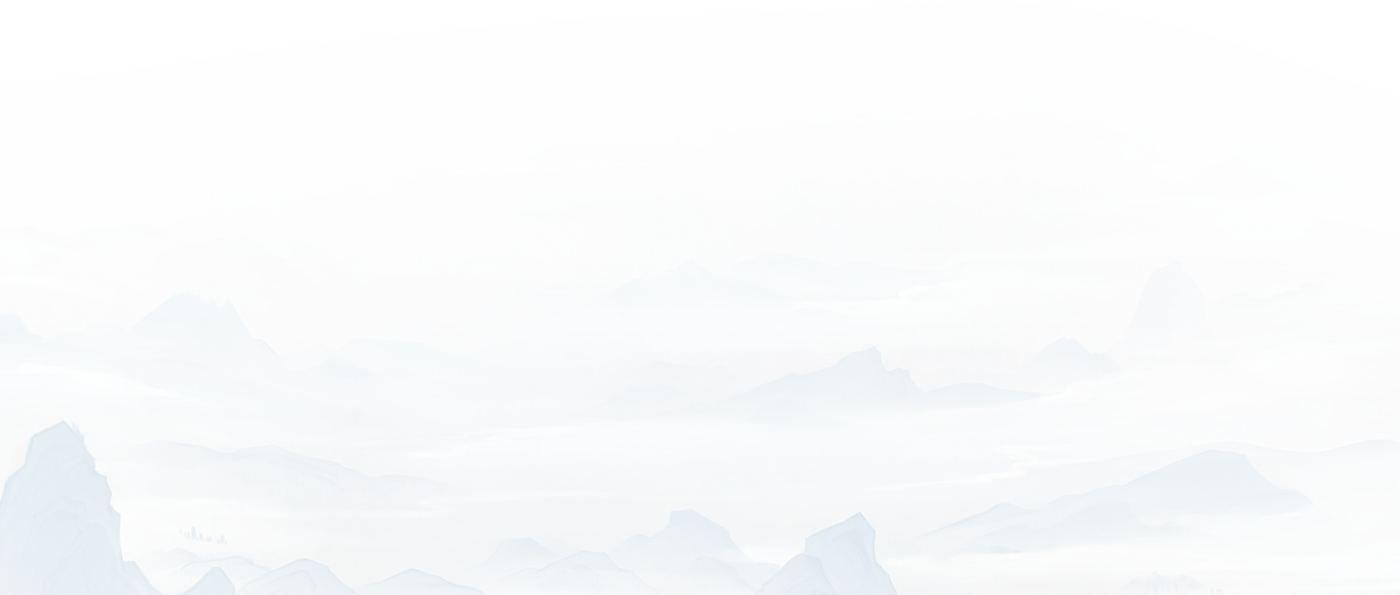
Unfolding Hechuan: A Collection of Years with Water as the Soul
Hechuan, as its name implies, is a place where rivers converge. If you ask how to identify it, the confluence of three rivers is its unchanging natural and cultural symbol.
If Hechuan is a book, then its cover must be the magnificent scene of the confluence of the Jialing River, Fujiang River, and Qujiang River.
Looking across the vast land of China, the cities that can truly be called the confluence of three rivers are few. Besides Hechuan, Leshan is one, with the confluence of the Minjiang River, Qingyi River, and Dadu River. In other cities, mostly two rivers converge to form a new river with another name, and then they have what they proudly call "the confluence of three rivers". For example, in Yibin, Sichuan, because the Jinsha River and the Minjiang River converge, it is then called the Yangtze River; in Ganzhou, Jiangxi, because the Zhangjiang River and the Gongjiang River meet, it is then called the Ganjiang River; in Ningbo, Zhejiang, because the Yuyao River and the Fenghua River converge, it is then called the Yongjiang River, and so on.
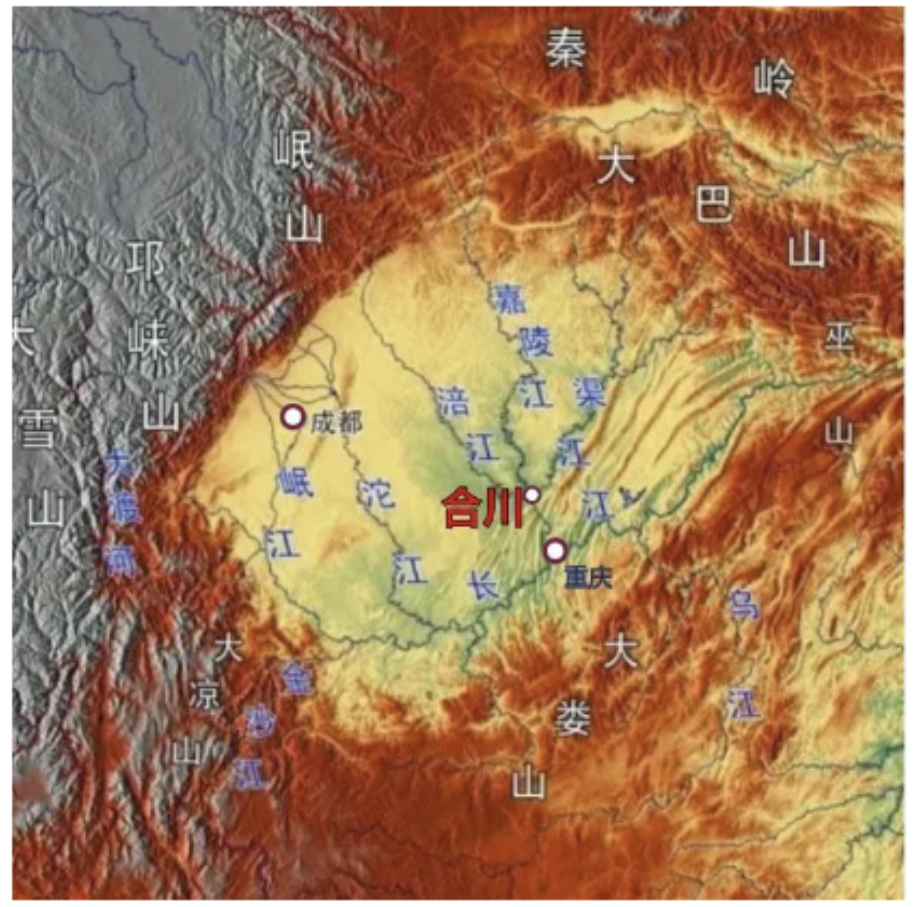
▲ Map of Three Rivers in Hechuan
Drawn by Mo Xuanyan
In the urban area of Hechuan, in addition to the magnificent confluence of the three major rivers and their continued flow forward, there is also a stream that can be called a river winding southward. This is the Xiao'anxi River. The Xiao'anxi River, also known as the Lindu River, is the last tributary of the Fujiang River. It originates from the eastern foot of the Bayue Mountain in Yongchuan, Chongqing, with a total length of 170 kilometers, approaching the length of the Zhangjiang River in Ganzhou (176 kilometers), and exceeding the lengths of the Yuyao River (106 kilometers) and the Fenghua River (93.1 kilometers) in Ningbo.
If we make comparisons and inferences based on the statements of the above-mentioned cities, the landscape pattern of Hechuan city is not only "the confluence of three rivers", but also "the confluence of five waters" - the upper and middle reaches of the Jialing River count as one water, the Qujiang River counts as one water, the Fujiang River counts as one water, the Xiao'anxi River (Lindu River) counts as one water, and the lower reaches of the Jialing River counts as one water. Any of the five waters is like a talented scholar or a noble lady among rivers.
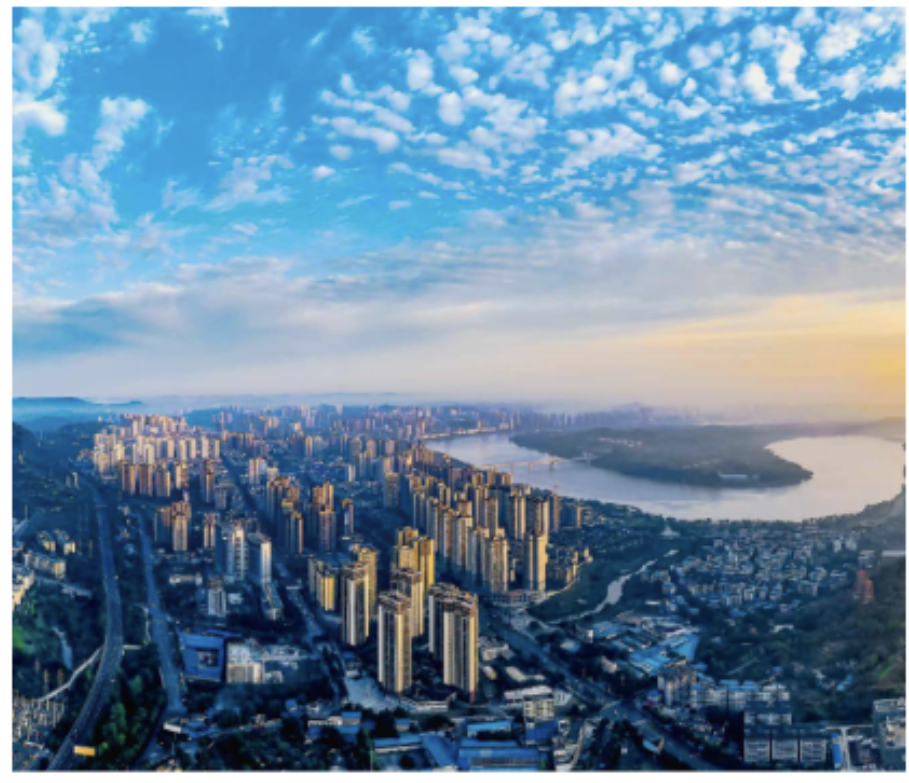
▲ The Beautiful Scenery of Three Rivers in Hechuan
Photographed by Jing Xin
If Hechuan is a book, then its spine must be those long years of taking water as the path and traveling the world by boat.
Hechuan has a long and distant history that is inseparable from "the confluence of three rivers" and "the confluence of five waters".
How long is this period of time or this history exactly? Looking far back, Mamenchisaurus tells us that it is approximately 140 million years; the Wushan Man tells us that it is at least 2 million years. Looking closer, the Hechuan known to the ancestors of the Pujiang River should be around 5,000 years ago; the Hechuan initially managed by the magistrate of Diejiang County is also 2,335 years ago from now.
Hechuan, with its historical civilization born from rivers, has a long history and profound heritage. Its unique landscape temperament and humanistic spirit have long written itself into an extraordinary book in the world. This book is so fascinating that one cannot help but read it.
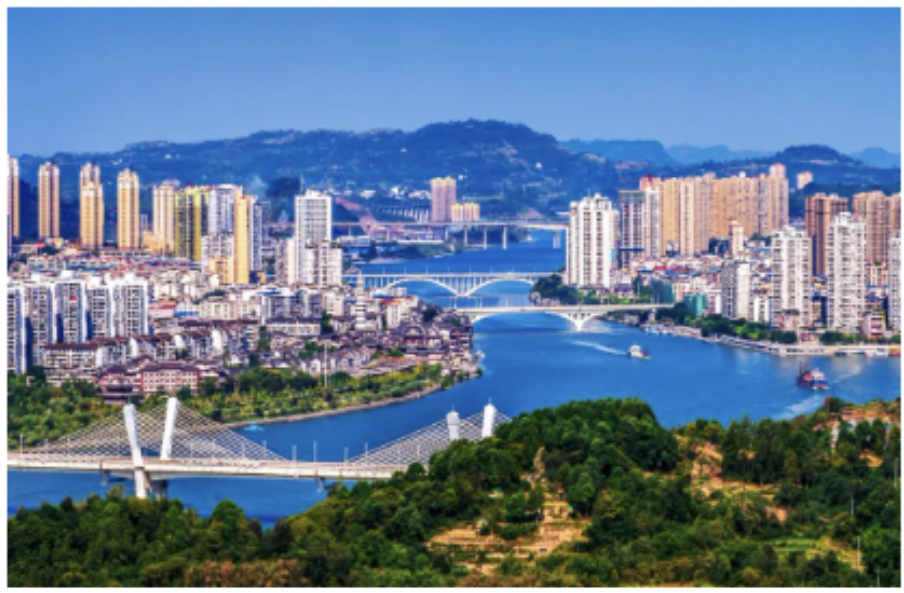
▲ Beautiful Waters of Three Rivers
Photographed by Chen Ming
If Hechuan is a book, then its back cover must be a new red sun emerging above the Dongshan Mountain.
Dongshan Mountain (now called Baita Ping), the first mountain that the three rivers flow through after their confluence, was the first stop of the land transportation in the past when going east from Hechuan to Chongqing and reaching the Xiajiang (the Yangtze River Three Gorges area). It was once an important pass on the 400-li "Yangguan Avenue" in central Sichuan and also an excellent place to follow the rising sun and overlook the thousand-year-old Hezhou City with "endless scenery in sight". The White Pagoda of Ci'en Temple on the mountain, due to its momentum like "a colorful brush and a bronze dragon, about to soar into the sky", is called the Wenbi Pagoda. The Wenbi Pagoda has stood on Dongshan Mountain for as long as 343 years, and the place where its remains are still has the lofty and far-reaching momentum of "chanting on the high pagoda and looking down at the low state".
The Yangguan Avenue is used to help move forward, and the Wenbi White Pagoda is used to inspire literary spirit and strengthen the spirit. The sunrise on Dongshan Mountain is even more "If you can in one day renovate yourself, do so from day to day. Yea, let there be daily renovation." The book of Hechuan is full of history everywhere and looks towards the future everywhere.
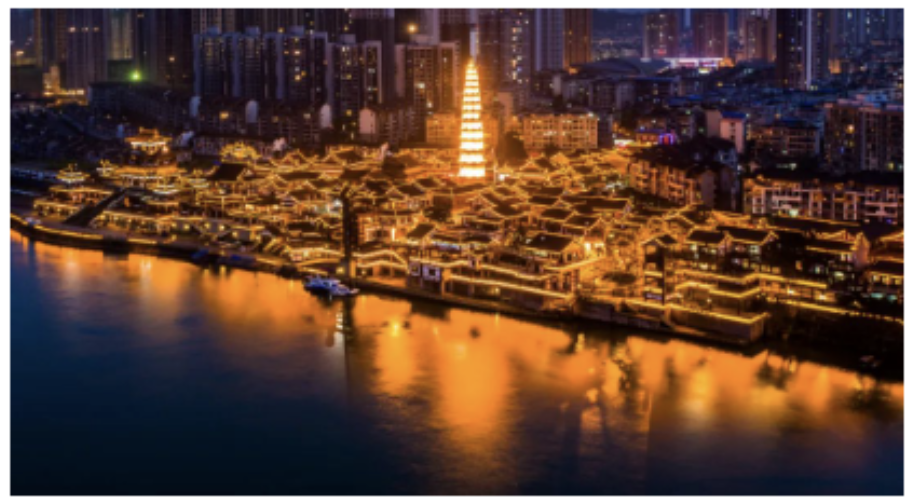
▲ Night of the Ancient Street
Photographed by Li Yongguang
Regarding this book of Hechuan, this distinctive book, how exactly should it be read in order to perceive its aesthetic temperament, understand its historical roots, and further grasp its cultural confidence and spirit of struggle? This has always been a problem that has perplexed me.
Finally, I thought of the way of reading it together. Many hands make light work. With more people, there will be a wider range of views; with more people talking, the communication will naturally be richer. I hope that those who are familiar with it can read the thick book "thinly" and understand the "Greatest Simplicity" of Hechuan; for those who don't know it well, they can read the thin book "thickly" and comprehend the "Profound Meaning in Simple Words" of Hechuan. Even those as ignorant as I am should strive diligently to understand it as clearly as possible and taste its essence. Thus, there came the reading and writing of "Read Hechuan with Me".
"Read Hechuan with Me" is open. This "me" is a pronoun, referring both to the author himself and to you, him, or her. Everyone who participates in "reading Hechuan" is the protagonist of this performance art.
From now on, let's walk into the beautiful Three Rivers and the ancient charm of Hechuan together, which may be familiar or unfamiliar to us, within three months, with one issue per day and five issues per week. On the basis of understanding, knowing, and discovering, tell the stories of Hechuan well and express our pure feelings.
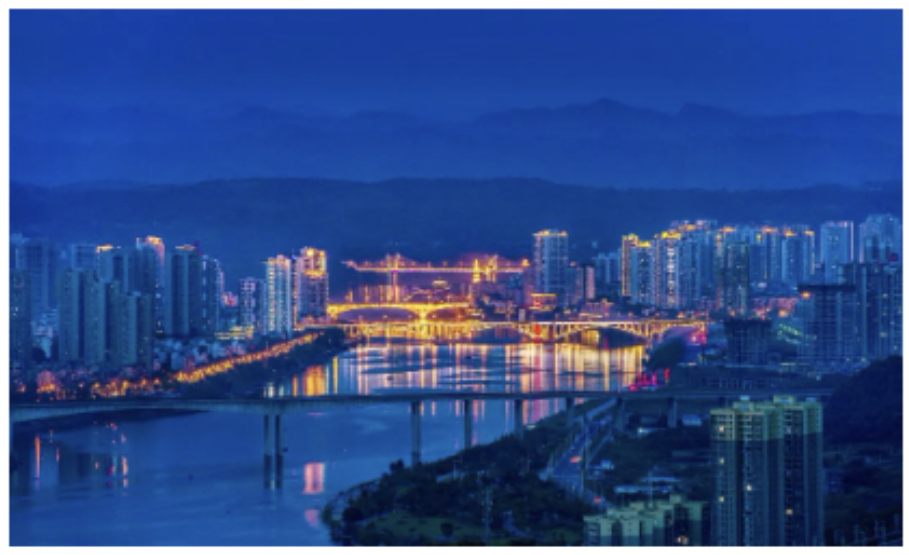
▲ The Night of Deep Blue
Photographed by Liao Guowei
"Read Hechuan with Me", a total of 12 readings in 66 issues.
First Reading of Hechuan: The Brilliant Pearl on the Three Rivers, mainly introducing the geographical advantages and climate conditions of Hechuan.
Second Reading of Hechuan: The Ancient Civilization with Ba-Pu Culture as the Feature, mainly exploring the historical origin and cultural roots of the humanistic spirit of Hechuan.
Third Reading of Hechuan: The Iterative Changes in the 2300-year History of Administrative Divisions, mainly clarifying the four major historical stages of Dianjiang, Dongyan Canal, Hezhou, and Hechuan.
Fourth Reading of Hechuan: The Unique Scenery of Agricultural Civilization, mainly reviewing the production methods and living conditions of the people living by the Three Rivers in their struggle with nature.
Fifth Reading of Hechuan: Multiple Beliefs Integrated into Real Life, mainly explaining the historical accumulation and cultural relics of Longduo Mountain and Laotan Ancient Town.
Sixth Reading of Hechuan: World-class Historical and Cultural Contributions, mainly interpreting the construction of the mountain city defense system and the huge impact of the Fishing City Defense War.
Seventh Reading of Hechuan: The Underrated Swan Song of Historians, mainly commenting on the life stories and upright spirit of the historian Zhang Senkai.
Eighth Reading of Hechuan: People Who Cannot Be Forgotten in National Industry, mainly exploring the glorious experiences and legendary life of "Son of Hechuan" Lu Zuofu.
Ninth Reading of Hechuan: An Immortal Movement in Chinese Educational History, mainly analyzing the social background and ideological brilliance of Tao Xingzhi's educational thoughts.
Tenth Reading of Hechuan: The Power of Hechuan in the National Anti-Japanese War, mainly reflecting the patriotic consciousness and national salvation spirit behind the anti-Japanese deeds of the people in Hechuan.
Eleventh Reading of Hechuan: Pioneers of the Great Cause in the Times, mainly introducing revolutionary martyrs and heroic figures in Hechuan or those who came out of Hechuan.
Twelfth Reading of Hechuan: A Slow Tour Waiting for You to Discover, mainly discussing the secret landscapes, intangible cultural heritage inheritance, and nostalgia memories of Hechuan.
There is a topic after each issue of each reading. Everyone is welcome to come for criticism, correction, research, and discussion. Also, everyone is welcome to follow the WeChat official account "Hechuan Zhengxie Jun".
Looking forward to having you read Hechuan with me!
